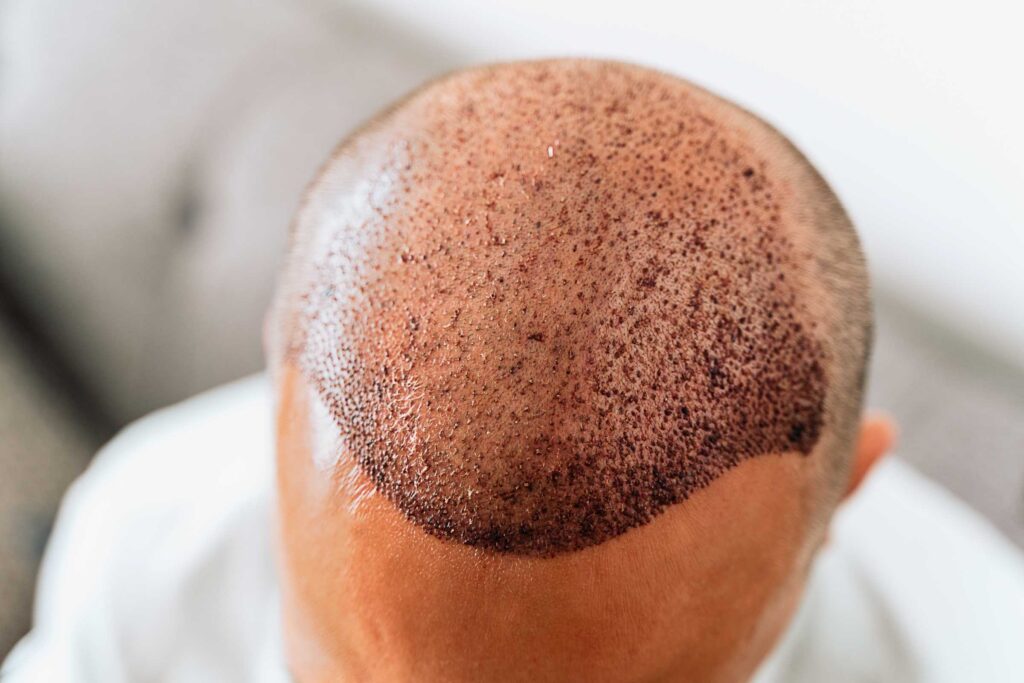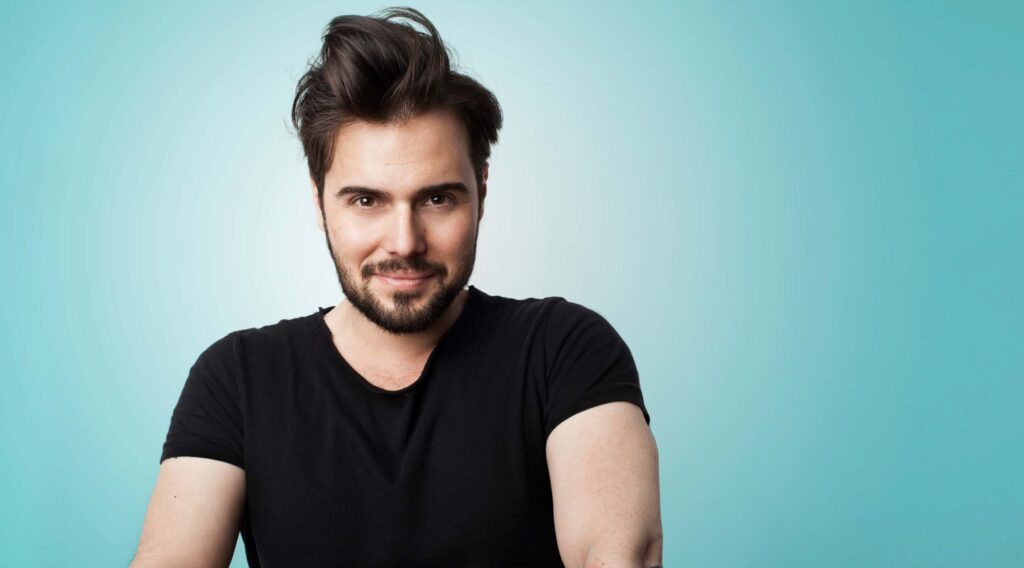Thinking about a hair transplant in Turkey? You’re not alone. Turkey is a world leader in hair transplantation surgery thanks to experienced surgeons, high quality standards, and clear, competitive pricing. This Mira Clinic guide explains options, costs, timelines, and risks—so you can choose confidently.
Why Choose Hair Transplant in Turkey
Historical rise & market size
In two decades, Turkey built a specialized ecosystem for hair transplants: focused surgical units, private hospitals, multilingual coordinators, and streamlined travel. As volumes grew, teams refined the fue method and quality controls. Today, transplant clinics in Turkey offer predictable logistics and strong outcomes.
Cost advantage vs Europe / USA
The transplant cost in Turkey is often thousands of dollars lower than in the US or Europe. Savings come from labor, facilities, and scale—not cutting corners. The real differentiator is the team: who plans your case, who extracts each hair graft, and who will perform hair implantation under medical supervision.
Which treatment are you interested in?
Basics of Hair Transplant in Turkey
What is a hair transplant
A modern transplant moves hair follicles (each follicular unit holds 1–4 hairs) from the stable donor area—usually the back and sides—to thinning zones. Planning balances coverage and density with donor preservation. The goal is a natural hairline that fits your face today and ages well.
Hair Transplant Techniques
Several established techniques are available today. The best choice depends on donor capacity, pattern of thinning, and patient expectations.
FUE (Follicular Unit Excision)
Individual follicular units are extracted with a micro-punch and implanted into small recipient sites. It typically leaves minimally visible pinpoint marks and offers high flexibility for covering larger areas. Procedure time commonly ranges from 4–8 hours depending on graft count.
Sapphire FUE
A form of FUE in which recipient sites are created with smooth, sharp sapphire blades. These can produce finer, more uniform incisions, potentially allowing closer graft spacing and, for many patients, quicker healing with relatively less bleeding. Final results still depend on planning and graft handling.
DHI (Direct Hair Implantation)
Uses Choi implanter pens to open the site and place the graft in a single motion, giving precise control over angle and direction—especially useful for hairline design and filling between existing hairs, often without a full shave. It can be slower per graft than FUE, so it’s often favored for focused areas and detailing.
Stem-Cell/Micro-tissue Approaches
Small tissue samples from a follicle-rich area are processed to create a fine cellular suspension that is injected into thinning zones to support regeneration and improve hair thickness over months. Protocols vary by center and the evidence base is still evolving, so verify licensing and scientific backing before proceeding.
Bottom line
The technique is a tool; outcomes are driven by sound planning, gentle graft handling and preservation, and smart graft distribution for a natural hairline and balanced density that lasts.
Who is a good candidate?
Ideal candidates have a stable pattern of hair loss, a healthy donor area, and realistic goals. Very young patients or those with diffuse thinning may need medical therapy first. Certain scarring or inflammatory conditions must be treated before hair transplantation surgery.
Cost Breakdown & Pricing in Turkey 2025
Price by Grafts
Prices vary by clinic tier, technique, and surgeon involvement. The figures below are common 2025 package quotes (USD) and include typical bundled services. Your case could be above or below these guideposts depending on number of grafts, donor traits, and complexity.
| Graft target | Price (USD) | What to know |
|---|---|---|
| 1,500–2,000 | 2,200–3,700 | Ideal for hairline/front refinement. |
| 2,500–3,000 | 2,800–4,700 | Many clinics price “up to X grafts.” |
| 3,500–4,000 | 3,500–5,900 | May be split over two days. |
| 4,500–5,000 | 4,500–6,800 | Confirm safe daily graft limits. |
If quoted per graft, expect broad ranges like $0.70–$1.20 per graft, adjusted for tools and team structure.
Request pricing
By sending, you agree we may contact you on WhatsApp with pricing.
Got it! We'll WhatsApp you the pricing shortly.
What Packages Include
“All-inclusive” packages usually cover consultation and design, local anesthesia, extraction and implantation, first wash and aftercare kit, starter medications, hotel (often 2–3 nights), and airport–hotel–clinic transfers. Premium tiers may add PRP, extra hotel nights, or VIP transport. Get every item in writing.
Hidden costs / extras to watch for
Ask about overage fees when grafts exceed the bundle, add-ons (PRP, laser), translation or weekend surcharges, extra hotel nights, and card fees vs. cash discounts. Request a final, signed quote listing technique, the target number of grafts, and the named hair transplant surgeon who will supervise.
Where to Get a Hair Transplant in Turkey
City Snapshot: Istanbul, Antalya, Izmir, Ankara
- Istanbul: Widest choice—from value to premium—and the deepest bench of experienced surgeons. Frequent flights and flexible scheduling.
- Antalya: Calmer recovery near resorts; fewer boutique centers than Istanbul but smooth logistics.
- Izmir: Solid value in private hospitals; quieter city experience.
- Ankara: Academic/private hospital settings; low-key feel with strong medical infrastructure.
Clinic vetting checklist (licenses, staff, portfolio)
Pick the surgeon first, clinic second. Confirm: a licensed physician designs your plan; roles of assistants are transparent; the facility is registered; emergency protocols exist; and before/after photos show consistent angles and lighting. Ask for cases that match your age, hair type, and pattern.
Notable clinics & case studies
Look for depth, not just highlights: 2,500–3,200 FUE to rebuild the frontal third; DHI refinement for hairline density; conservative female cases when the donor is stable. Honest, consistent portfolios beat “viral” one-offs.

Hair Transplant Procedure in Turkey: Step by Step
Pre-op assessment, planning & consultation
You’ll review medical history, scalp photos, and donor mapping. The plan covers technique, number of grafts, hairline shape, and how to protect native hair with medical therapy. Travel timing and aftercare are clarified so you know what each day looks like.
Surgery Day
Local anesthesia keeps you comfortable—you shouldn’t feel sharp pain, though pressure is normal. With FUE, follicular units are extracted one by one, sorted by hair count, and placed into micro-sites. With DHI, grafts are loaded into implanter pens for precise angle control. A moderate session typically lasts 6–8 hours with breaks. You’ll leave with a light dressing and clear instructions.
Recovery Timeline
- Days 1–7: tiny scabs; swelling peaks around day 3–4; gentle washes begin.
- Weeks 2–8: many transplanted hairs shed—expected.
- Months 3–6: early regrowth; strands may look thin or wiry at first.
- Months 6–12: visible thickening and shape.
- Months 12–18: final refinement, especially at the hairline/crown.
New Trends for Hair Transplant in Turkey
AI & Robotics
Robotic platforms and AI support donor mapping, graft scoring, and standardized site creation. They can add consistency in large sessions, but surgical judgment and gentle handling still drive hair graft survival and naturalness.
Regenerative Care
PRP is a common adjunct. Stem-cell or exosome therapies remain investigational in routine practice; if you consider them, ask for published evidence, regulatory status, and informed-consent details.
Female hair transplants
Women can be excellent candidates, but fewer qualify because diffuse thinning often affects the donor area too. Selection hinges on diagnosis, lab screening where appropriate, and conservative goals. When the donor is stable, smaller sessions can produce elegant, discreet improvements.
Before You Book a Hair Transplant in Turkey
Choosing surgeon vs clinic
Insist on a named surgeon consultation—ideally with hairline drawings and density planning. Clarify who designs, who extracts, and who places grafts. Clear roles prevent surprises and align expectations.
Quality of grafts, survival rate & guarantees
Ask about punch size, traction-minimizing handling, hydration/temperature control, and typical out-of-body time. Ethical clinics don’t guarantee a fixed growth percentage; they guarantee process quality, follow-up, and a plan if things aren’t tracking as expected.
Communication & Coordinators
Ensure you’ll get written instructions and an English-speaking coordinator you can reach quickly. Ask how follow-up is handled after you fly home (video calls, messaging, local partners).
Travel, Timing & Buffer
Plan 5–7 days in Turkey for consult, surgery, first/second washes, and clearance to fly, plus a small buffer day. Stay within 10–15 minutes of the clinic, keep plans light and sun-safe, and pack button-front shirts to avoid pulling clothes over the scalp. For the flight home, carry your aftercare kit and use a neck pillow; wear only a loose, non-contact cap if approved. Skip gym and pools, sleep slightly elevated, and hydrate.
Payment & Insurance
Hair transplants are usually self-pay. Most clinics accept cards and cash; some offer bank transfer or cash discounts. Confirm currency, potential card fees, and what happens if your final graft count changes on the day.
Hair Transplant in Turkey: Risks & Prevention
Common risks: infection, graft failure, scarring
As with any procedure, there’s a small risk of bleeding, infection, anesthetic reactions, temporary numbness, or less-than-expected growth. FUE leaves tiny dot scars in the donor; good spacing and technique make them discreet. Following aftercare closely helps keep risks low.
Red Flags
Be wary of very low prices, rushed sales tactics, or clinics that won’t name the surgeon. Unlicensed or unsupervised teams can overharvest the donor and misplace angles, leading to visible scarring and poor growth.
Aftercare, Maintenance & Long-Term Results
Daily Care
Expect a simple routine: sleeping slightly elevated, saline sprays, gentle shampooing, no scratching or picking, and avoiding pressure on grafts. Short courses of antibiotics or anti-inflammatories are common—use only what your doctor prescribes.
Growth Stages
Most people see meaningful change by 6–9 months, with full maturation at 12–18 months. Because native hairs can continue to miniaturize, your surgeon may suggest medical therapy to maintain global coverage.
When to Call
Contact your team promptly for increasing pain, spreading redness, fever, foul drainage, or sudden patchy loss beyond expected shedding. Early review keeps small issues small.
5–7 Day Plan for Hair Transplant in Turkey
Outline
Day 1: Arrival, hotel check-in, photos, consultation, hairline design.
Day 2: Surgery (6–8 hours), dressing, aftercare kit, rest with head slightly elevated.
Day 3: First wash at clinic; swelling usually peaks then begins to settle; review home washing.
Day 4: Short check-up and Q&A; light shaded walk; no gym/pool or tight hats.
Day 5: Second wash; if healing is on track, receive travel clearance and flight guidance.
Days 6–7 (buffer): Optional extra wash/check; light, sun-safe sightseeing; depart when comfortable.
Off-Day Tips
Sleep slightly elevated, hydrate, and eat light.
Wear button-front/zip tops—nothing pulled over the scalp.
Carry your aftercare kit in hand luggage; use a neck pillow on the flight.
Avoid direct sun, helmets/tight caps, gym, sauna, and pools until your team says it’s safe.

FAQs: Hair Transplant in Turkey 2025
Most 2025 packages fall roughly between $2,200–$6,500, depending on technique, clinic tier, and the number of grafts.
Neither wins for everyone. FUE is efficient for bigger zones; DHI can shine for hairline detail. Your plan should match your goals and donor quality.
Transplanted hairs are more resistant, but no surgery stops future thinning. Medical therapy may be advised to support non-transplanted hair.
Plan 5–7 days in Turkey. Scabs and redness usually settle in 7–10 days; swelling fades over a few days.
Yes—if the donor is stable and diagnosis supports surgery. Careful selection is essential because many female patterns are diffuse.
Local anesthesia prevents sharp pain. Expect pressure during the procedure and mild soreness afterward, typically managed with simple analgesics.
Conclusion: Is Hair Transplant in Turkey Right for You?
If you’re considering Hair Transplant in Turkey, focus on three pillars: good indication (stable pattern and adequate donor), expert planning (named surgeon and clear roles), and diligent aftercare. Whether you choose FUE, DHI, Sapphire, or a selective robotic assist, outcomes depend on thoughtful design and gentle technique. At Mira clinic, we prioritize donor safety, conservative design, and results that look like you—now and years from now.
If you have any questions, please contact us.





